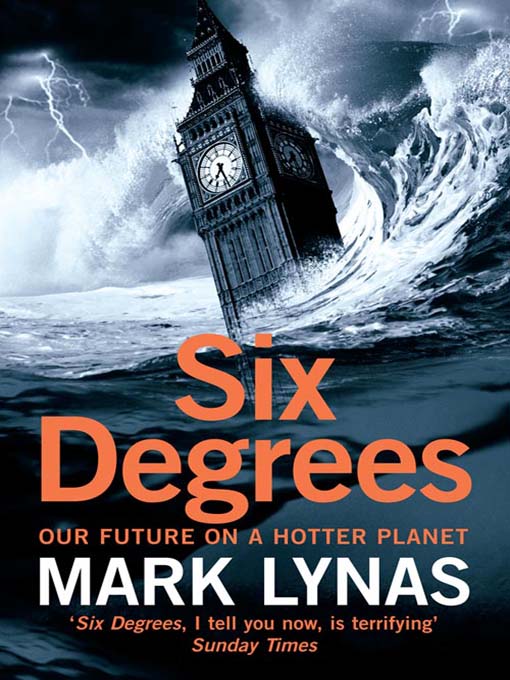This sobering book by Mark Lynas gives us a scientific look into a conceptual six-degree breakdown of what the world would come to roughly, if it were to endure these minute temperature rises. The book aims to show what each degree increase would bring, chapter by chapter. He speaks of endangered coasts, towns, rivers, croplands, and even mountains somehow. He brings a convincing argument to the table at the beginning of the book:
"Consider this: 18,000 years ago, during the deepest freeze of the last ice age, global temperatures were about six degrees colder than today. In that frigid climate, ice sheets stretched across North America from sea to shining sea."
This breathtaking fact truly puts the fact into perspective - if we can go from ice sheets covering all of North America to our currently acceptable habitat now with just six degrees increase in heat, just thinking of the implications of a further six worries me a little, the living conditions before dangerous for all of the world, not to mention the sheer damage it would bring to the extremely well established 1st world culture, with all the buildings and roads placed, homes built with current lifestyles in mind, and much more. The UK is barely ready for extreme weather, if anyone can recall what any winter is like here in the UK, then you'll know what a disaster it is. A layer of snow can disrupt even the biggest of cities. If our planet is to get hotter, the general idea is that the heat will melt the ice at both the North and South Pole, creating a rising sea level and massive increase of weather change.
The first degree speaks of changing landscape, dust bowls back in America, but with vengeance. Already, the world has risen 0.7 degrees in the last 10 years. A dangerous number to hear for such a small period of time. This one degree will bring an increase in hurricane activity. The second degree would begin the release of all green houses gases, and they will surely affect the ocean. There will be severe crop losses at a cost of billions, and forest fires would become common. It's predicted a 3rd of all wildlife would die off as a result of this second degree. At the third, Africa will get rainfall back, but the southern part would dry up to become almost inhabitable. At this temperature, sea levels are easily a metre higher. The fourth degree would see a collapse of civilisation, leading to worldwide conflict, and 70% of the Mediterranean summer rain would fail to fall for an additional 65 days. At the fifth, there will be no ice, no rain forests, floods, droughts, and the Earth would become unrecognisable, deserts would expand dramatically. The certainty of humans living is unknown at the sixth degree.
If I may, a quote from the film "The Day After Tomorrow" talks about the reversing of the North Atlantic current, something which brings about devastating weather as you may witness within the film. This source may be fictional, but the danger is there. Needless to say, Mark covers all of this in his book and more. The stark contrast of rising sea levels with sandstorms and droughts would be thought as common, we as a society should want to avoid such a perilous world. As a photographer, I feel as though I should make my contribution towards convincing those who are skeptical, by showcasing the damage which is kickstarting this destruction upon our planet.

No comments:
Post a Comment